
Daniel Hudson Burnham, was an American architect and urban designer. He was the Director of Works for the World's Columbian Exposition in Chicago, colloquially referred to as "The White City".

Washington Union Station is a major train station, transportation hub, and leisure destination in Washington, D.C. Opened in 1907, it is Amtrak's headquarters and the railroad's second-busiest station with annual ridership of just under 5 million and the ninth-busiest in overall passengers served in the United States. The station is the southern terminus of the Northeast Corridor, an electrified rail line extending north through major cities including Baltimore, Philadelphia, New York City, and Boston and the busiest passenger rail line in the nation.
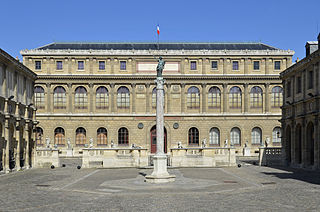
Beaux-Artsarchitecture was the academic architectural style taught at the École des Beaux-Arts in Paris, particularly from the 1830s to the end of the 19th century. It drew upon the principles of French neoclassicism, but also incorporated Gothic and Renaissance elements, and used modern materials, such as iron and glass. It was an important style in France until the end of the 19th century. It also had a strong influence on architecture in the United States, because of the many prominent American architects who studied at the École des Beaux-Arts, including Henry Hobson Richardson, John Galen Howard, Daniel Burnham, and Louis Sullivan.

Henry Hobson Richardson was a prominent American architect, best known for his work in a style that became known as Richardsonian Romanesque. Along with Louis Sullivan and Frank Lloyd Wright, Richardson is one of "the recognized trinity of American architecture".
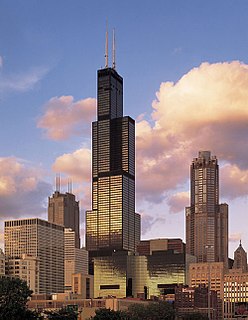
The buildings and architecture of Chicago have influenced and reflected the history of American architecture. The built environment of Chicago is reflective of the city's history and multicultural heritage, featuring prominent buildings in a variety of styles by many important architects. Since most structures within the downtown area were destroyed by the Great Chicago Fire in 1871 Chicago buildings are noted for their originality rather than their antiquity.
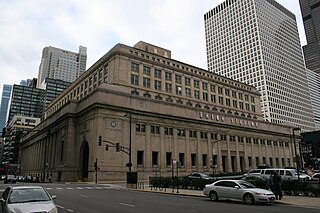
Chicago Union Station is a major railroad station that opened in 1925 in Chicago, Illinois, replacing an earlier station built in 1881. It is the only remaining intercity rail terminal in Chicago, and is the city's primary terminal for commuter trains. The station stands on the west side of the Chicago River between West Adams Street and West Jackson Boulevard, just outside the Chicago Loop. Including approach and storage tracks, it covers about nine and a half city blocks. The station serves as Amtrak's flagship station in the Midwest, and is also the downtown terminus for six Metra commuter lines.

Union Station is a historic train station at Grant Street and Liberty Avenue, south of the Allegheny River, in Pittsburgh, Pennsylvania, United States. It was one of several passenger rail stations that served Pittsburgh during the 20th century, and it is the only surviving station in active use.
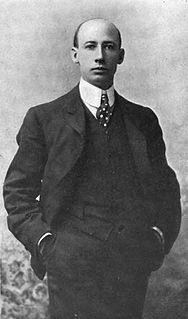
Jules Guérin was an American muralist, architectural delineator, and illustrator.

The Carbide & Carbon Building is a 37-story, 503 feet (153 m) landmark Art Deco skyscraper built in 1929, located on Michigan Avenue in Chicago. It was converted to a hotel in 2004.

Graham, Anderson, Probst & White (GAP&W) was a Chicago architectural firm that was founded in 1912 as Graham, Burnham & Co. This firm was the successor to D. H. Burnham & Co. through Daniel Burnham's surviving partner, Ernest R. Graham, and Burnham's sons, Hubert Burnham and Daniel Burnham Jr. In 1917, the Burnhams left to form their own practice, which eventually became Burnham Brothers, and Graham and the remaining members of Graham, Burnham & Co. – Graham, (William) Peirce Anderson, Edward Mathias Probst, and Howard Judson White – formed the resulting practice. The firm also employed Victor Andre Matteson.

D.H. Burnham and Company was an architecture firm based in Chicago, Illinois. As successor to Burnham and Root, the name was changed once John Root died in 1891. Root was the chief consulting architect for the World's Columbian Exposition. After Root's death, Daniel Burnham took that title along with his old title of Chief of Construction.

Eclecticism is a nineteenth and twentieth-century architectural style in which a single piece of work incorporates a mixture of elements from previous historical styles to create something that is new and original. In architecture and interior design, these elements may include structural features, furniture, decorative motives, distinct historical ornament, traditional cultural motifs or styles from other countries, with the mixture usually chosen based on its suitability to the project and overall aesthetic value.

The Railway Exchange Building, also known as Santa Fe Building, is a 17-story office building in the Historic Michigan Boulevard District of the Loop community area of Chicago in Cook County, Illinois, United States. It was designed by Frederick P. Dinkelberg of D. H. Burnham & Company in the Chicago style. Dinkelberg was also the associate designer to Daniel Burnham for the Flatiron Building in New York City.

Willoughby James Edbrooke (1843–1896) was an American architect and a bureaucrat who remained faithful to a Richardsonian Romanesque style into the era of Beaux-Arts architecture in the United States, supported by commissions from conservative federal and state governments that were spurred by his stint in 1891-92 as Supervising Architect of the U.S. Treasury Department.
Frank Freeman was a Canadian-American architect based in Brooklyn, New York. A leading exponent of the Richardsonian Romanesque architectural style who later adopted Neoclassicism, Freeman has been called "Brooklyn's greatest architect". Many details of his life and work are however still unknown, and Freeman himself has received little recognition outside academia. Many of his works have been demolished or otherwise destroyed, but most of those that remain have received New York City landmark status, either independently or as part of larger historic districts.
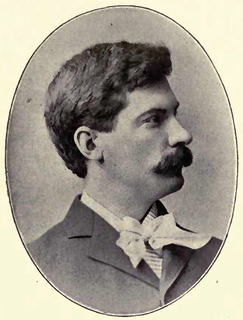
Ernest Robert Graham was an American architect.
Frederick Philip Dinkelberg was an American architect best known for being Daniel Burnham's associate for the design of the Flatiron Building in Manhattan, New York City. He practiced in New York City from 1881 to c.1891, and after that was based in Chicago, Illinois.
William Edward Parsons was an architect and city planner known for his works in the Philippines during the early period of American colonization in the country. He was a consulting architect to the United States government from 1905 to 1914.
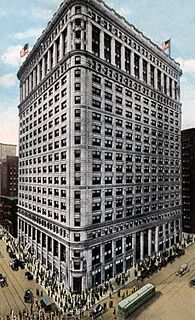
The Burnham Center, originally known as the Conway Building and later as the Chicago Title & Trust Building, is a historic skyscraper in Chicago, Illinois. Built with funds from the Marshall Field estate, it was the last building designed by Daniel Burnham before his death on June 1, 1912 and was completed in 1913.
Daniel Hudson Burnham, Jr. (1886–1961), was an architect and urban planner based in Chicago and one of the sons of the renowned architect and urban planner Daniel H. Burnham. Burnham, Jr., was director of public works for the Century of Progress 1933-34 World's Fair in Chicago, the same role his father held for the World's Columbian Exposition of 1893.

















